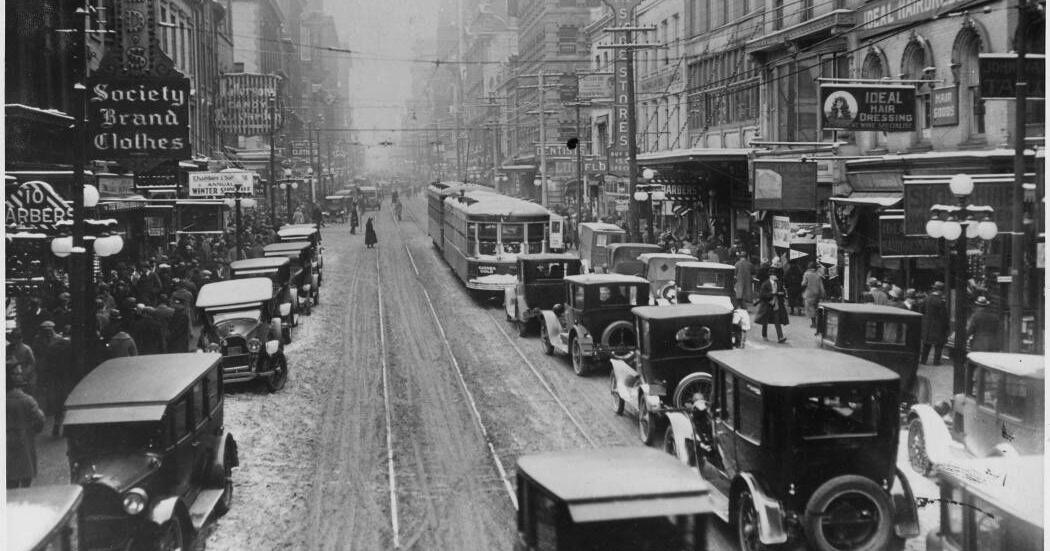There’s a good reason why some might think Toronto’s best days are behind it. Here’s how we change their minds
By Shawn Micallef
Copyright thestar

The Toronto Star’s City Report Card survey suggests six in 10 Torontonians believe that the city’s best days are in the past.
Given the challenges Toronto faces right now, it’s an understandable position, but it’s wrong.
Toronto’s best days are ahead of us, but we’ve got to get a bunch of things right to get there.
Think of Toronto as a teenager. Teenagers have growing pains and are awkward. They act out, make wrong decisions. Mistakes and missteps. Sometimes they need to be punished. They can have tempestuous relationships with their parents who boss them around, sometimes unfairly, and control their allowance.
It’s also the most exciting time of life, because the future is full of potential and could be great. Teenagers are works in progress, and so is Toronto. But living through the teenage years can be frustrating and fraught.
Toronto’s civic youthfulness can’t be understated. Parts of the city were still farmland in living memory of boomers and some gen-Xers. Scarborough City Centre, along with the Scarborough Town Centre mall, went from farm to “downtown” almost overnight in the 1970s.
Considering the age of some other major cities (thousands of years compared to Toronto’s couple of hundred) the speed at which Toronto has grown is remarkable. The challenges that came with that growth can make quieter days in the recent past seem like better days. But were they?
I think about old photos of Yonge Street before the subway opened in 1954. Yonge was absolutely jammed and streetcars were backed up in traffic, much like today on other streets. Toronto has always been a city that grows fast and then infrastructure catches up, fixing it for a while. There always has been an infrastructure lag here.
I also think of other old photographs from the 1990s, when Toronto was a sea of parking lots. Like a lot of North American cities, Toronto cannibalized itself, destroying its thick urban form to make room for cars. If we could go back to mid-1990s Toronto we’d be shocked at how much empty space there was.
Toronto is lucky because the quarter-century-long building boom filled most of them back in. That alone is a reason Toronto is better now: there’s simply more of it. It used to be a thinner city. Related, and in living memory too, was a city where it was possible to drive and park very close to destinations relatively easily. That’s an impossible expectation now, but it still exists and explains some of the resistance to transit priority lanes and other projects today.
Of course, some people pine for that smaller, quieter, thinner Toronto, and that’s fine. A big city may not be for them, but Toronto has always had ambitions to be bigger.
Nostalgia plays a part here. People’s memories of the past aren’t always trustworthy: a good period for one person might have been terrible for somebody else.
For instance, many people are fond of early-to-mid-1990s Toronto because it was cheap and easy to find housing or artist and workshop space, but that happened partly because a devastating recession and deindustrialization destroyed local economies and put thousands, especially the working class, out of jobs. Nostalgia doesn’t always see the bigger picture as it’s a personal view.
Today there’s never been more to do in Toronto, with more people from more places around the world doing interesting things. We are filled with arts, culture and sports: when people say there’s nothing to do in Toronto, that’s on them. Toronto may have been better in the past for some, but it was also considered boring and downright provincial by others. Remember, the “Toronto the Good” nickname wasn’t always meant as a compliment. The food scene alone is another reason to love Toronto today versus its meat-and-potatoes past.
Other low marks in the report card hint at why people are pessimistic: not everyone gets to participate in all of today’s good stuff. Particularly the affordability problem: if you can’t afford to live in the city, it makes enjoying it or being a creator or independent entrepreneur difficult and joyless. Thinking of Toronto as a teenager puts the report card results into perspective.
Toronto needs to grow up in some areas, like allowing more forms of housing and density in all neighbourhoods. As a young adult, Toronto needs more independence too. Maybe we’ll get a provincial government that doesn’t meddle in local affairs as much.
Of late, Queen’s Park is behaving like an overbearing helicopter parent, one who is especially miserly and controlling when it comes to the allowance. In Toronto this translates into a long list of “unfunded projects,” ones that would help the city grow up and get better report card grades.
Teenage Toronto has everything it needs to be cool and fun now, but it needs some help to get to adulthood successfully.



